Street Vendors: Medellín, Tirana, Johannesburg, Yogyakarta
The new four-channel video installation by visual artist and filmmaker Su Tomesen premieres at the Netherlands Film Festival in Utrecht. It is the grand finale of an ambitious six-year project about street dealers, everyday design and how private companies take over the public domain every day.

The four-part project connects street vendors on several continents: Su Tomesen filmed street vendors in Medellín, Tirana, Johannesburg and Yogyakarta.
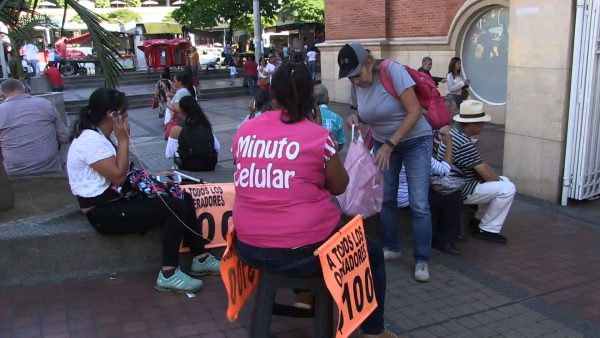 Four 30-minute films; each shows a day in the life of street traders, small entrepreneurs and kiosk owners in the individual cities. Street vendors is not only about how private companies occupy the public domain, but also about the informal economy, the ingenious use of materials and the inventiveness that stems from economic scarcity. It is a portrait of inventive street vendors who make a complete business out of little and use the ingredients of the urban environment for their trade. Their stalls are like curious interventions in the public space. At the same time, the four films are portraits of four cities in developing countries. The camera observes: the activities are shown in detail and without interviews, explanation or dialogue. Situations are reminiscent of installations and performances from the visual arts.
Four 30-minute films; each shows a day in the life of street traders, small entrepreneurs and kiosk owners in the individual cities. Street vendors is not only about how private companies occupy the public domain, but also about the informal economy, the ingenious use of materials and the inventiveness that stems from economic scarcity. It is a portrait of inventive street vendors who make a complete business out of little and use the ingredients of the urban environment for their trade. Their stalls are like curious interventions in the public space. At the same time, the four films are portraits of four cities in developing countries. The camera observes: the activities are shown in detail and without interviews, explanation or dialogue. Situations are reminiscent of installations and performances from the visual arts.
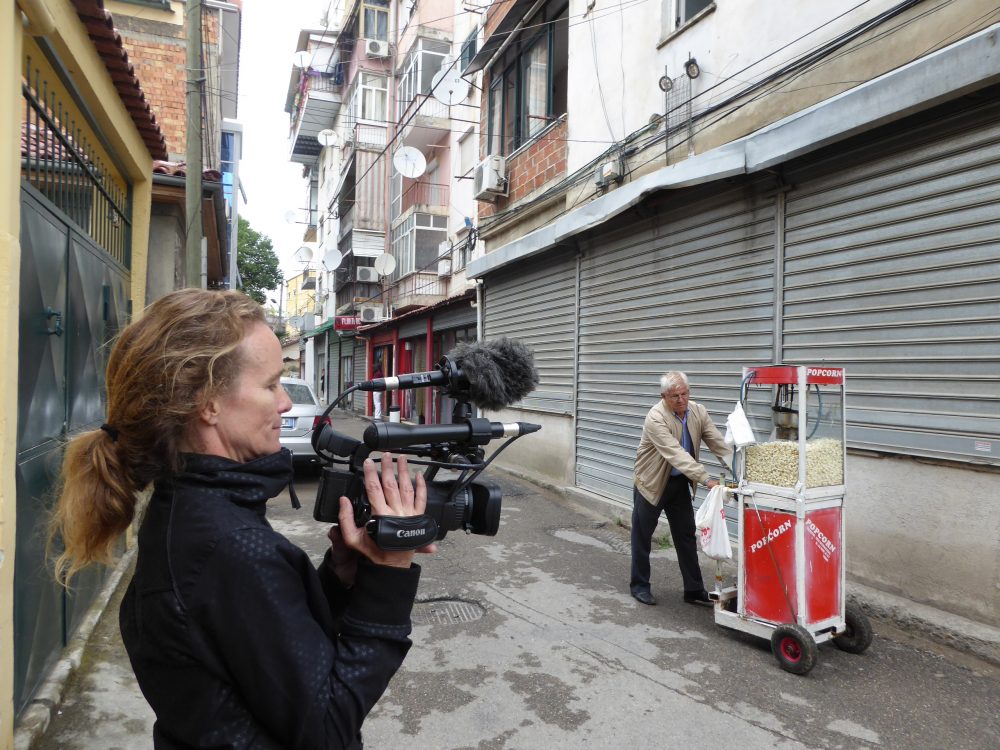 Let me briefly introduce my art practice: after getting my Master of Fine Arts at the Sandberg Institute I did residencies in Amman, Belgrade, Johannesburg, Naples, Medellín and Tirana. I also worked on an international video project in Buenos Aires, Port-au-Prince and Rio de Janeiro. Since 2011 I live and work in Amsterdam and Yogyakarta, together with my Indonesian partner Teguh Hartanto and our daughter. Between traveling and living in the Netherlands I am always looking for dialogue: I broaden both my own horizons and those of my audience. In this I often feel like a cross-cultural ambassador, bringing together work and audience from different parts of the world. My work arises from an interaction with the environment. I and the other', in which I build bridges out of interest. Inter-esse', literally 'standing between'. It brings me to insights about how (different) people stand in life; in terms of priorities, aesthetics, beliefs, time allocation. In this way I inform people about cultural differences and similarities, which I see more and more.
Let me briefly introduce my art practice: after getting my Master of Fine Arts at the Sandberg Institute I did residencies in Amman, Belgrade, Johannesburg, Naples, Medellín and Tirana. I also worked on an international video project in Buenos Aires, Port-au-Prince and Rio de Janeiro. Since 2011 I live and work in Amsterdam and Yogyakarta, together with my Indonesian partner Teguh Hartanto and our daughter. Between traveling and living in the Netherlands I am always looking for dialogue: I broaden both my own horizons and those of my audience. In this I often feel like a cross-cultural ambassador, bringing together work and audience from different parts of the world. My work arises from an interaction with the environment. I and the other', in which I build bridges out of interest. Inter-esse', literally 'standing between'. It brings me to insights about how (different) people stand in life; in terms of priorities, aesthetics, beliefs, time allocation. In this way I inform people about cultural differences and similarities, which I see more and more.
In making work, I allow the unpredictability of the street as an active element.
Before I went to the Sandberg, I studied cultural history and worked as a researcher and television director. This background is integrated in my artistry: research on location usually precedes the making of work. The street is my source, curiosity my engine. With an interested attitude, a fresh look and healthy intuition, I go out and investigate. In making work, I allow the unpredictability of the street as an active element. I am fluent in the basics of language and easily make contact with people, also in kampungs, townships and so-called slums, where the majority of humanity lives. Within this framework is the video installation Street vendors: Medellín, Tirana, Johannesburg, Yogyakarta originated and grew.
Yogyakarta: Jalan
The four part series Street vendors started in Yogyakarta in 2012 with the film Jalan ('street' in Indonesian). After years of making short videos and working for City One Minutes, it was time for longer work. "Those videos look like trailers," said colleague Vava Stojadinovic. He became involved in the project Street vendors first editor and later the editing supervisor. All those short videos that I had made during residencies all over the world often dealt with wonderful situations on the street. In those years I had mastered a bottom-up perspective - the study trip What's up what's down in 2010, of the then Fonds BKVB, had played a role in this. Survival strategies and the decisiveness of the 'small independent artist' in the public domain became more and more my focus. Because of my predilection and fascination for human ingenuity, improvisation and the spirit of enterprise within the wonderful world of urban micro-economy became subjects. I worked on the first film Jalan with intervals of three years. After that it went faster
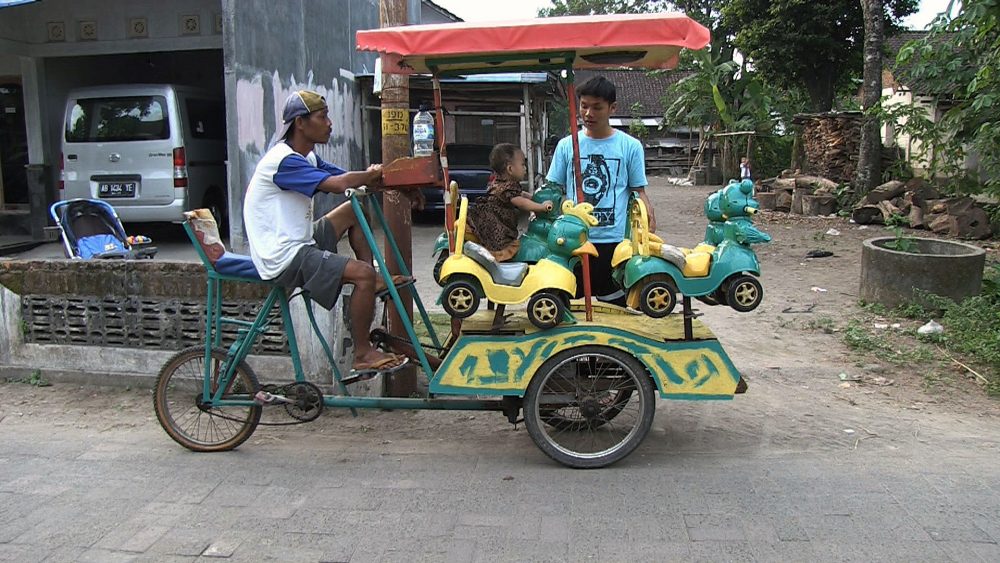
Tirana: Rruga
After Jalan (2015) followed the second film: Rruga (2016), 'street' in Albanian. When I edited with Vava Jalan in 2015, I realized the potential of a series of works about ingenuity and microeconomics on different continents. During my travels and residencies I had seen so many interesting examples, and captured them in photo and video. I especially thought back to my stays at el puente_lab in Medellín and at The Bag Factory in Johannesburg. In the series I also wanted to portray a city on the European continent. I considered Naples or Marseille, but then there was the open call from the Mondriaan Fund for a work period at the Tirana Institute of Contemporary Art (TICA), "an independent platform for socio-politically engaged contemporary art". Because I had been to Tirana four times before, I knew I could make the European part happen there. I wrote a scenario - using Jalan as a reference film. With this I was selected. In Tirana in 2016 I spent six weeks doing further research and filming immediately. This was not easy because the previous summer the government had started a campaign against the informal street economy. Moreover, the average Albanian is not very big on confidence. The curator of the residence, Stefano Romano, was a great help; he translated for me and told the vendors what I was doing and what I wanted from them. As soon as two of them agreed to cooperate, others were convinced: a domino effect was created.
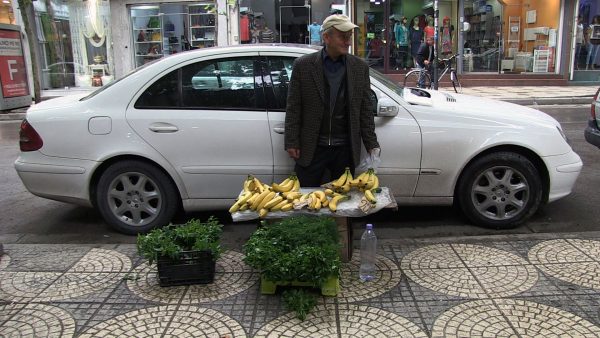
Same merchandise, same jacket. Only six years older. So am I.
I filmed in different parts of the city. On a corner in the Blloku, where the former residence of the dictator Enver Hoxha stands, there are flower sellers. One of them, Valbona, I had photographed before, in 2010. I found this out when I checked old photos. Same merchandise, same jacket. Only six years older. So am I. I filmed her, and her 'competitor', on that corner. In the morning when setting up, in the afternoon when taking down and leaving, and when moving the flowers into the shade when the sun had turned. I cycled past them countless times and each time we made small talk with hands and feet and with the help of a dictionary or passers-by. Valbona reminded me of my aunt Mieke. What also made me less weird was that I had taken my daughter Lina to Albania. Albanians are generally fond of children. Lina was a kind of mascot.
Johannesburg: Street
At the beginning of June 2016, I went to Amsterdam with some nice material to Rruga to assemble. And then I was half way through the four-part project. For the parts in Medellín and Johannesburg, I applied to the Mondriaan Fund in 2017 for a project investment, which was honoured. The Tijl Fund also made a contribution. The day after Mondriaan agreed, I immediately booked the trip to Johannesburg and Medellín.
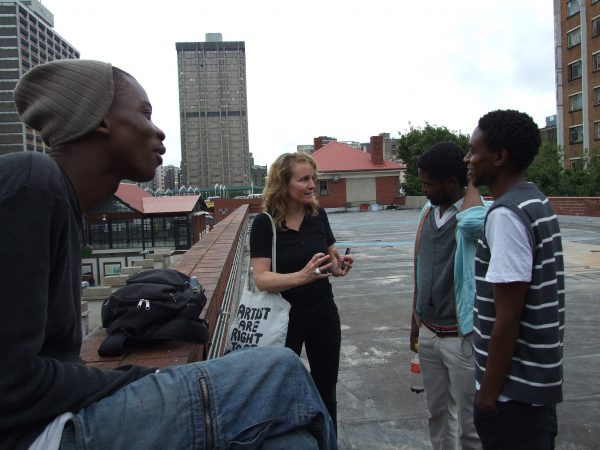
In Johannesburg, I gathered the material for Street in November 2017 and worked with two young local assistants, one black and one white - this is necessary in Jozi (pet name for Johannesburg). It's one of the most dangerous cities in the world, especially if you're a blonde, white woman walking the streets with a camera. All went well, but there was one morning when we were not alert. We were stuck on President Street and a man gestured to our car door like something was up. I turned the window open to speak to him - James did NOT yell, "Don't open the window!". And yes, two hands came in to demand the phones under threat. James wriggled his old Nokia out of his pocket: not interesting. A third hand - hey, another man! - turned off the engine. When I saw that happen, I closed the window full of adrenaline. The hands disappeared. The traffic was moving again. And I started the engine. All this happened in 30 seconds.
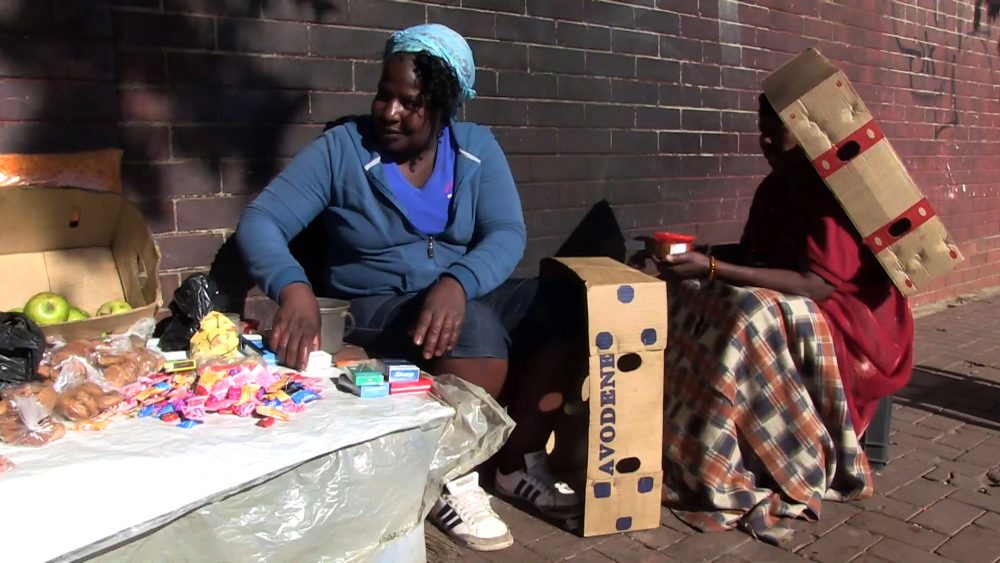
I got to know the city already in 2010, during a three-month residency at The Bag Factory. In the hustle 'n bustle of Jo'burg's heady CBD (Central Business District) is home to an endless amount of examples of microenterprise. We also filmed in Soweto and Melville. In the CBD we filmed the phenomenon of same time photoI was there when I filmed Johannes, who I had already photographed in 2010. I filmed Johannes there, who I had already photographed in 2010. I recognized him later in a photo, again when I looked at old photos. He had grown older.
Medellín: Calle
For Calle in Medellín in March 2018, I didn't just focus on the endless street trading in the city's hectic center (Medellín es sin fin!), but also on the housing estates around Laureles and the illegally built Santo Domingo. In the center I filmed coffee vendor Marinelsy, and very funny: she also reminded me of my aunt Mieke! I have aunts all over the world.
It is faster and cheaper to call one of the mobiles that are attached with chains to the vest of the minutos than to buy new credit.
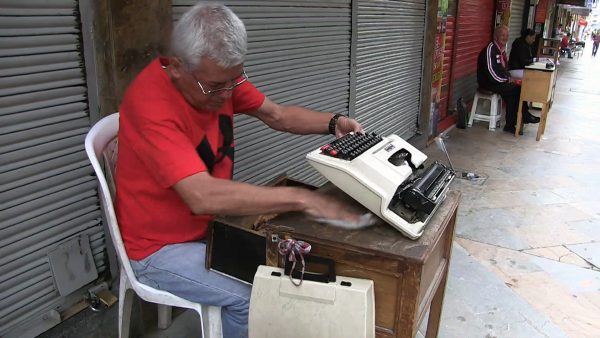 In Medallo (a nickname for Medellín) I worked with Paula Rengifo, who was also my assistant during the work period at el puente_lab in 2012-13. After Rruga, I wanted to highlight the existence of illegal neighbourhoods. There were also two phenomena that I had remembered from my time at el puente_lab and that I wanted to show in Calle: the minutos seller and lave fácil. It is quicker and cheaper to call one of the mobiles that are attached with chains to the jacket of the minutos seller than to buy new credit. In the poorer neighborhoods, the lave fácil-service is common; people rent a washing machine for a few hours, since they don't earn enough to buy one. In steep streets boys tie washing machines on mopeds. A bizarre sight.
In Medallo (a nickname for Medellín) I worked with Paula Rengifo, who was also my assistant during the work period at el puente_lab in 2012-13. After Rruga, I wanted to highlight the existence of illegal neighbourhoods. There were also two phenomena that I had remembered from my time at el puente_lab and that I wanted to show in Calle: the minutos seller and lave fácil. It is quicker and cheaper to call one of the mobiles that are attached with chains to the jacket of the minutos seller than to buy new credit. In the poorer neighborhoods, the lave fácil-service is common; people rent a washing machine for a few hours, since they don't earn enough to buy one. In steep streets boys tie washing machines on mopeds. A bizarre sight.
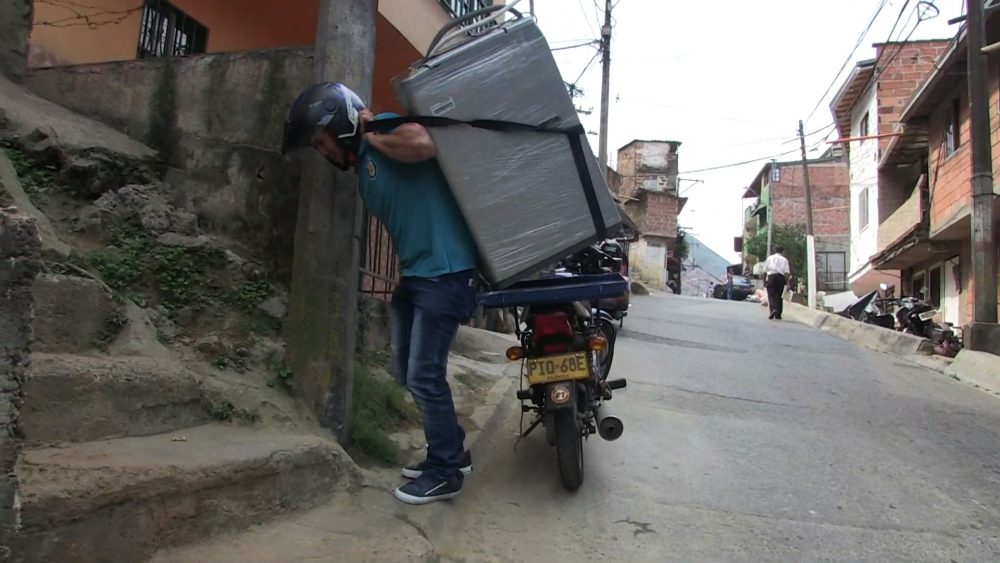
Premiere
With Medellín, my quadriptych was complete. I could now begin the final phase: finishing the installation. Now it is here and it will have its world premiere. In a way, it's incredible that in three years, from the moment I realized this was going to be a series until now, I was able to realize this video installation.
With thanks to the funds (Mondriaan Fund, Amsterdam Fund for the Arts, Tijl Fund, Netherlands Film Fund, Stokroos Foundation) and people who have supported me, I am now at the grand finale has arrived: the world premiere at the Netherlands Film Festival. I am really looking forward to the exhibition of the installation that will show local differences and global similarities of four cities on four continents. I like to inform, amaze and enchant my audience.


